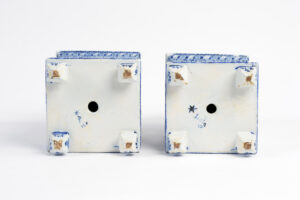
![]()
Images on this website are licensed under a
Creative Commons Attribution-NoDerivs 3.0 Unported License.
OBJECT
•D1699. Pair of Blue and White Pyramidal Flower Vases
Delft, circa 1695

![]()
Images on this website are licensed under a
Creative Commons Attribution-NoDerivs 3.0 Unported License.
•D1699. Pair of Blue and White Pyramidal Flower Vases
Delft, circa 1695